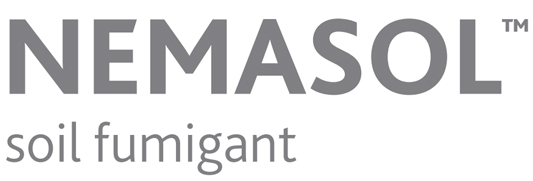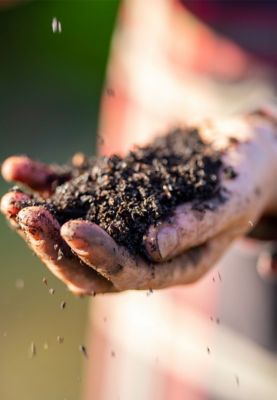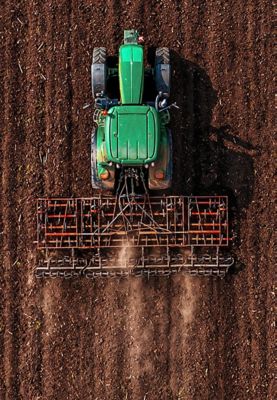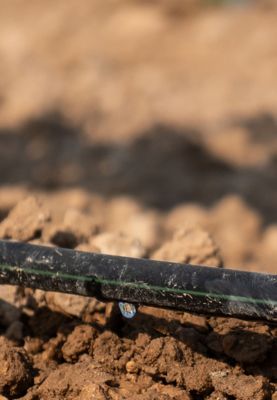There are three ways to avoid premature loss of methyl isothiocyanate (MITC) gas and enhance the efficacy by maintaining it in the soil: soil compaction, plastic seals and water seals.
1. Soil compaction is often inherent to the application by mechanical soil injection due to the presence of a compaction roll on the application machine.
A good practice is to inject Nemasol™ into the soil at a depth of 10–15 cm and to homogenize at about 25–30 cm before the soil is sealed by a roller. This application allows a homogeneous distribution of the product and limits gas emissions by compacting the soil. The process helps capture MITC in the soil, promoting public and worker safety.
2. The application of a plastic tarpaulin film is another method to avoid premature MITC loss.
Various types of plastic films are available, but it’s recommended to use a gas-tight plastic film, specifically the totally impermeable film (TIF) type, to effectively prevent rapid MITC loss.
- Permeability is a crucial factor that determines the ability of MITC to pass through a plastic film. It depends on various properties such as film thickness, density, chemical composition, and environmental conditions like temperature and humidity.
- TIF is a multilayer polyethylene (PE) plastic film that contains a thin layer of EVOH (ethylene vinyl alcohol copolymer). It has better barrier properties than the PE and polyamide that is normally present in virtually impermeable film (VIF).

3. Water seals are another effective method to prevent premature MITC loss. Intermittent irrigation provides the best results.
| Irrigation session | 1 | 2 | 3 | 4 | 5 | |
|---|---|---|---|---|---|---|
| Time between Nemasol application (at 07:00) and irrigation session | 4 hours | 12 hours | 16 hours | 24 + 4 hours | 24 + 12 hours | |
| Intermittent irrigation | Quantity of water | 10 mm | 5 mm | 5 mm | 5 mm | 5 mm |
| Time of irrigation | 11:00–13:00 | 19:00–20:00 | 23:00–24:00 | 11:00–12:00 | 19:00–20:00 | |
Certain statements may not be applicable in all geographical regions. Product labeling and associated claims differ based on government requirements. Use plant protection products safely. Always read the label and product information before use.





